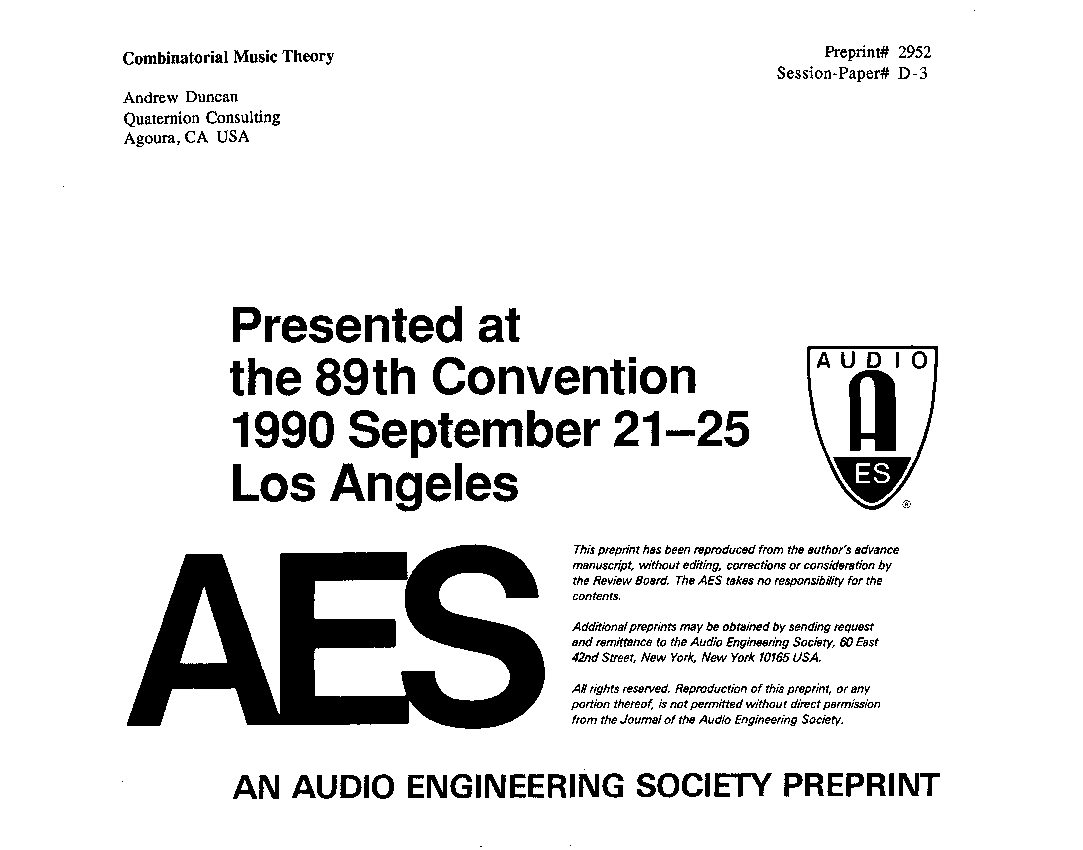Home / Publications / E-library page
You are currently logged in as an
Institutional Subscriber.
If you would like to logout,
please click on the button below.
Home / Publications / E-library page
Only AES members and Institutional Journal Subscribers can download
Musical patterns may be investigated with the mathematical tools more commonly applied in science and engineering. For example, the cyclic autocorrelation of a musical scale describes its interval content. Fingering patterns on string instruments are embedded in a space with an unusual topology. Ideas from crystallography may be applied to the description of structure-preserving transformations of melodies. These phenomena are explored for the particularly common case of the twelve-note equally-tempered scale.
Author (s): Duncan, Andrew
Affiliation:
Quaternion Consulting, Agoura, CA
(See document for exact affiliation information.)
AES Convention: 89
Paper Number:2952
Publication Date:
1990-09-06
Import into BibTeX
Session subject:
MIDI and Electronic Music
Permalink: https://aes2.org/publications/elibrary-page/?id=5741
(1911KB)
Click to purchase paper as a non-member or login as an AES member. If your company or school subscribes to the E-Library then switch to the institutional version. If you are not an AES member Join the AES. If you need to check your member status, login to the Member Portal.

Duncan, Andrew; 1990; Combinatorial Music Theory [PDF]; Quaternion Consulting, Agoura, CA; Paper 2952; Available from: https://aes2.org/publications/elibrary-page/?id=5741
Duncan, Andrew; Combinatorial Music Theory [PDF]; Quaternion Consulting, Agoura, CA; Paper 2952; 1990 Available: https://aes2.org/publications/elibrary-page/?id=5741